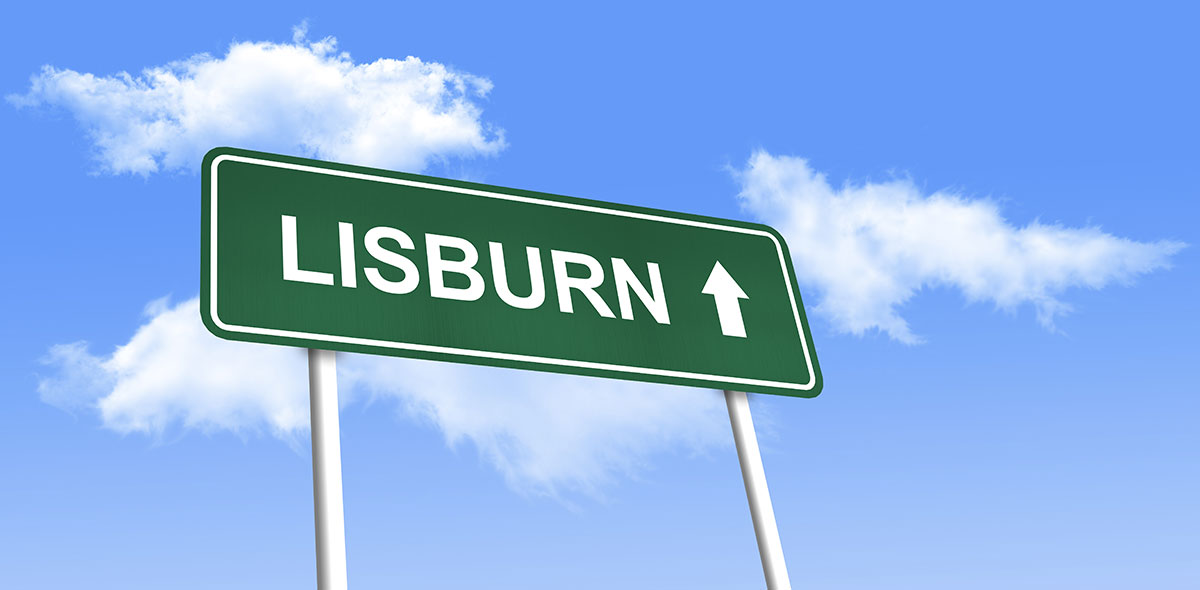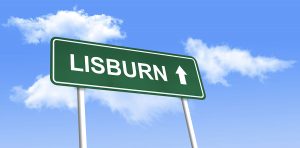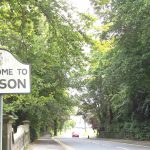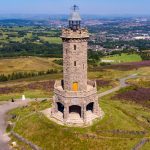
The Five Minute Guide to Lisburn, NI
Lisburn which sits right on the border between two counties. Antrim & Down has a long and innovative history as one of the industrial centres of Northern Ireland. Since 1698, it was the centre for linen production, leading the way for weaving throughout both the rest of Ireland and the rest of the UK.
We wanted to take a look at this historic city and judge it for all it’s worth. Don’t worry, we will be gentle. Ask all the other towns we turned the Five Minutes Spare charm on… they loved it.
Let’s start with the early history and work our way up to the modern stuff. Surprisingly enough, the roots of Lisburn aren’t necessarily wrapped in the textile industry. Lisburn pre-dates the mill.
Early Lisburn Days
As it stands today, Lisburn was given city status in 2002 by the Queen. It has a population of nearly 50,000 people and makes up part of the Belfast to Dublin corridor that contains the majority of Ireland’s population. It hasn’t always been such a popular place though, back in the beginning, it was a settlement on the River Lagan called Lisnagarvagh. The name was old Irish for a fort built in a ring, that contained gamblers. Whether this is a reference to the scene in the bible or not, we don’t know. The real reason it was named for gamblers has been lost to the annals of time.
What we do know is that it was first called by Lisburn (as we know it) around 1662. It was one of the many churches in the area that first recorded this shortening of the name. Some folk think it was a mash-up between the Scots word ‘burn’ (as in-stream) and the Irish for Ringfort ‘lios’. There’s no real way to tell. It is entirely possible that Lisburn is all that remains of that original settlement with a longer name and, historically speaking, that would make a sort of sense.
Anyway, what’s in a name? If it were in England it would have been called Lischester, Scottish? It would have been…erm… Lisburn. Welsh? We genuinely don’t know.
The land became occupied by the masses in 1609, so just after the turn of the century. James I, the king that conquered everything, sent a minion of his by the name of Fulke Conway to take over the lands in the southwest of County Antrim. Interesting note: the street layout was exactly as it is in the present day. There were a few exceptions where he built a mansion and a church. Again, if this were a place in England it would have a preserved mansion house – come – museum. If it were Scotland, they would have attached a golf course. If it was Wales? It would be about five hundred years older than it is.
The Plantation of Ulster
The Plantation of Ulster saw the population skyrocket. When the king sent yet more settlers throughout his rein, it eventually became a sizable town. It is believed that a landowner named O’Lavery had great influence in the area up until 1641, at which point he backed a rebellion. His land was confiscated and given to one George Rawdon later down the line. Meantime, the Lagan Valley that was previously unpopulated, filled with people. Prior to this it was a large bog area. It was once known as ‘the bogs’ and must have been quite a desolate place.
Lisburn was official enfranchised in 1661 as a borough, its patron was the Earl of Hertford, who owned the lands around it at the time. There are records of a fusilier regiment being formed here for years. It records a shortage of volunteers eventually ending this by-election… It’s all a bit unclear. You can read the records yourself, here.
Although there was a manor house in the area, it went up in flames in 1707 and nobody thought to rebuild it. Around about the same time as the fire consumed the stately home, the linen industry took off… but before all that, there was a rebellion.
The 1641 Rebellion
Understandably there was a bit of resentment towards the English invaders – because that’s what they were. In 1641, when Northern Ireland underwent a huge rebellion against the King’s rule – Lisburn stayed loyal to the crown. More than 300 insurgents were killed on Bridge street (which is probably haunted now) and a further 300 recorded to have been killed on Castle street. Although the rebels didn’t take the town, they did burn it out. It is recorded in the town history as this era when the name of the city changed to Lisburn… which we think makes the perfect time for a break in the history. Let’s look up some fun facts instead and lighten the mood.
Fun Facts about Lisburn!
By fun, we mean interesting – or occasionally ‘morbid’. It’s not our fault. It seems like if you put humans together in any place for a few hundred years and they will start to kill each other. You’d think we’d have learned by now. Never mind.
Some of the Five Minutes Spare best fun facts about Lisburn include:
- More than 3 million people live in the Dublin-Belfast corridor.
- In 2013, Lisburn was accredited with being the European City of Sport – so watch this space. When we get to famous people from Lisburn, we expect greatness!
- 1880 saw one of the first football teams in the area formed. They were called Lisburn Distillery, named after the brewery, they worked for. They were the first Irish team to ply under floodlights, back in 1952.
- Every June, Lisburn attracts an average 6,500 runners to its annual half marathon. The run is nicknamed the ‘fast and flat’ route.
- They may have watched the manor house burn down, but they certainly didn’t forget about it. They set up some lovely gardens on the site and named them ‘Castle Gardens’ in its honour.
Now you know that there is more to this lovely little city than meets the eye. We can get back to the history now, we just thought you could use a break.
The Linen Trade and Onwards
When the Huguenots fled France to Ireland in the 17th century, they brought the secrets of linen weaving with them. A large population of them settled in Lisburn and plied the secrets of their trade. Before anyone knew what was happening, the small town in Northern Ireland had become the European capital of linen making. While the rest of the textile industry didn’t really start until a hundred years later with the cotton mills of the industrial revolution; the Irish had been there, done that, and had the t-shirt spun from silken fibres.
Flax was cultivated and Irish yarn put to use to spin these new fibres. A weaving factory opened on Bridge Street. Later, the Quakers from England would have a huge influence on the area, contributing vastly to the growth of the flax industry. There was a huge effort to rebuild after the fire that took out the big house also took out most of the town. When they next rebuilt Lisburn, they built it out of stone. Unfortunately, this same great fire saw many (if not, all) of the catholic residences and businesses in town burned to the ground. Lisburn proceeded as a mostly protestant settlement thereafter.
Lisburn Post 1800
In 1800, Lisburn had a population of around 5,000. The thread spinning industry took off. In 1785 the river was opened for sailing between the city and Belfast. The railroad reached them in 1839 by which time a coach service already operated. Around this time there was a huge working class/landowner divide. Nevertheless, there were philanthropic works to offset the arguments. The Barbour family reportedly provided 350 homes for their employees. A hospital for the poor was opened in the 1830’s when cholera ravished the town.
By 1834, the Catholic population had grown a bit. However, their chapel was only one of more than a few other churches. There were Methodists, Presbyterians, the Church of Ireland was built here in 1623 – in stone – making it one of the few buildings that lasted. In 1880 two schools were opened. One was a grammar school, the other for the peasantry… we joke, but only a little. The history of the town records that no decade has passed without the opening of an educational establishment in Lisburn – since 1810.
1798 did see a rebellion. Some 300 weavers took to the streets to protest. The ringleader was elected one Henry Munro who was later hung. By 1819, the town was thriving and had stopped hanging people. It had 22 pubs… and you all wonder why Northern Ireland has such a drunken reputation. It’s the fault of your ancestors. In fact, the historians note that the growth of this era was rivalled only by the growth in the 60’s… when Lisburn was decidedly soberer…
Famous People from Lisburn
With so much history to it, it’s only natural that Lisburn would offer some famous faces throughout the years. We are expecting big things in the sporting world from the 2013 European city of Sport… Although with so many public houses we maybe shouldn’t?
Here are the Five Minutes Spare favourite famous people from Lisburn:
- Robert McNeill Alexander, CBE FRS, leading expert on fish, and zoologist, was a Lisburn man.
- Richard Dormer, who played a man from house Dondarrion on GOT, is from Lisburn… so is Hodor.
- Samuel McCloy, famous painter and artist, from Lisburn.
- David Williams-Ellis, the famous sculptor, is from Lisburn.
- Donna Traynor, the lead female anchor on Newsline, is from here, too.
Nope! No super-team of sporting heroes… Unless you count the 46 pages worth in Wikipedia. They feature names like Paul Agnew, Bobby Irvine, Paul Marshall and Alannah Stephenson. It’s quite a mixed list too. Lisburn sporting stars cover everything from cricket to badminton.
Anyway, let’s finish up the last hundred years or so of history and get to the good stuff… the things to do in the city that loves a drink.
Modern Lisburn History
During the Cold War Lisburn was home to the Royal Observer Corps, and during the Second World War, they had an anti-aircraft operations room in the local barracks. Notably, there was no conscription in Lisburn district during WW2, yet two full reserve troops still volunteered. They erected control points throughout the town, helped build air raid shelters almost overnight, and generally helped out on the home front if they didn’t volunteer for the front lines.
Some of the farmland around the area was requisitioned to build airstrips, on the Lough, a seaplane base was built, later the airstrips would be used as prison land in the ’70s. There were army camps throughout the town and one resident of the Historical Society recalls a troop of Welshmen and a delegation of Belgians assigned there. It’s a detailed, eye-opening account. You can read it here.
Arguably more impressive was that the Royal Observer Corps formed here in the Cold War are the people responsible for the four-minute nuclear attack warning that the whole of the United Kingdom now has in place. They were disbanded in 1992 but their legacy very much lives on to this day.
The Troubles Abate
Unfortunately, a rather darker portion of the history of Lisburn is the effect the Troubles in NI had on the town. They had problems and deaths most years between 1976 and 1996. Without going into too much detail, a combination of UVF bombing attacks, shootings, IRA assassinations, and numerous other incidents all contrived to make Lisburn a dangerous place to grow up in. We sincerely hope that we have seen the last of them. Wikipedia has a complete list of all the incidents during this time period but, frankly, we want to keep this article light-hearted and make the most of the positive. We acknowledge it, we don’t judge anyone involved, but we don’t want to detail gore.
Since the noughties, the Troubles haven’t ended completely – but dare we say that it seems to be confined to certain generations? The Millennials and Gen Z in Ireland are the same as Millennials and Gen Z everywhere… they just want peace to eat avocado toast and drink caramel lattes. Is that too much to ask?
Let’s look at the best things to see and do if you are spending time in Lisburn. If you ignore all the murder, it’s actually a really cool place.
Attractions in Lisburn
So if you are stopping by Lisburn in Northern Ireland for a week or two, what are the attractions you ought to make time for? Whether you have five minutes spare or a fortnight to pass: pick your favourites from our favourites and stick them in your itinerary…
Museums and Galleries
Lisburn being as old as it is means that there is any number of museums for you to visit and learn about the area. First, on the list of all time best museums in Lisburn is the Ulster Aviation Society. The lovingly abbreviated UAS is home to all you ever wanted to know about the wars, the area, and the planes they used to fight in them. It is every child’s dream.
Next on the list of the best museums in Lisburn is the Lisburn Museum and Irish Linen Centre, which combine to make one superior attraction. You might not think the textile industry is that interesting, but this is one place that will change your mind. Besides, it gives you plenty of detail on the beautiful Lagan Valley too.
There is a Sculpture Park for all you art lovers, which has been carefully curated inside Belshaw Quarry. It’s a great idea from a geological viewpoint. Why? Rocks are heavy. It’s much better to carve them where they stand. This awesome idea is really unique and inspires daily. It belongs to the Northern Ireland Environment Agency and the Belshaw’s Quarry National Nature Reserve, so there are plenty of walks and hikes around it, too. Give generously folks, these are good, wholesome organisations.
Historic Sights and Landmarks
Since this is an older town there are plenty of older sights to see. Remember the Castle Gardens we mentioned above? They were built in the place of the old manor house that burned down in the 18th century. It’s technically an outdoor space but it’s so well-known we labelled it in with the landmarks.
There is also the Island Arts Centre for those that love a good gallery. We thought we would pop it here since we are putting things in the wrong place today. A third very well known landmark is the Lisburn Cathedral and its clocktower. A great place for Instagram photos or, if you are into that sort of thing, a Tik Tok video.
Lastly, take a trip out to Hillsborough to see the courthouse. It’s an impressive old building, well worth the trip.
Shopping and Retail
Shoppers won’t be disappointed if they take the time out to visit Lisburn. Of course, Belfast has bigger retail establishments but that doesn’t mean you have no choices. Check out the Bow Street Mall which features loads of indoor shops and all day parking for under a fiver. If you want more in the way of department stores, then the Sprucefield Centre might be more your cup of tea. It’s the kind of classy that has an M & S food hall… most of us will probably never shop there but it’s nice to see how the other half live on occasion. Maybe buy an expensive ice cream or two…
Sports and Recreation
In terms of football clubs, you have plenty of choices. Let’s start with Football…
There are the previously mentioned Lisburn Distillery, the Lisburn Youth Football Club, and the Lisburn Rangers football club. You can catch most of them at the Bluebell Stadium where you can see a game almost every weekend.
Rugby
For rugby, you want Lisburn Rugby Club and some youth teams., but you don’t get to be the European Sports capital of 2013 with only two sports at hand. This area is surrounded by golf clubs so you can have your pick. You also have Lisburn Valley Leisure Centre, the North community Association, and the Bridge community centre for recreation. You can’t throw a stone in Lisburn without breaking the window of a sports venue. It’s a great destination for the active.
Other Notable Attractions
There are other best bits about Lisburn that we haven’t quite covered yet… For example:
Best Chippy = Hunt’s Traditional Fish and Chips in Woodland Park… as voted by the good people who take the time to leave Google reviews.
Best Club = Distil Night club… for the most part people party in Belfast and stumble home via taxi.
Best Café = Fifty8 – one of the few five stars we’ve seen recently.
Best Bench to Sleep on = Lisburn Square. You have the best choice there, too.
Now you know just about everything we do… Good luck out there. Please avoid the murderers.
How to Get There?

Image Max Sky/Shutterstock.com
You are almost clued up on all-things-Lisburn. However, you might want to know how to get there in order to visit this lovely NI city attraction.
By Road
Head south and a little west out of Belfast, it’s not that far down the M1.
By Rail
Head for the Bangor to Portadown line and get off at Lisburn Railway Station.
By Air
The nearest airport is Belfast International Airport. You could fly into Dublin, but you’d have a bit of a drive.
By Sea
If you can sail the River Lagan you can reach Lisburn by boat. It doesn’t have a port though.
Got Five Minutes?
Last but not least – if you have an interest in travel, or even if you just enjoy reading random stuff on the interweb, then head on over to Five Minutes Spare’s home pages. We have interesting travel itineraries for all local UK places, and a few others besides. Make every trip interesting from now on and check in with Five Minutes Spare.




